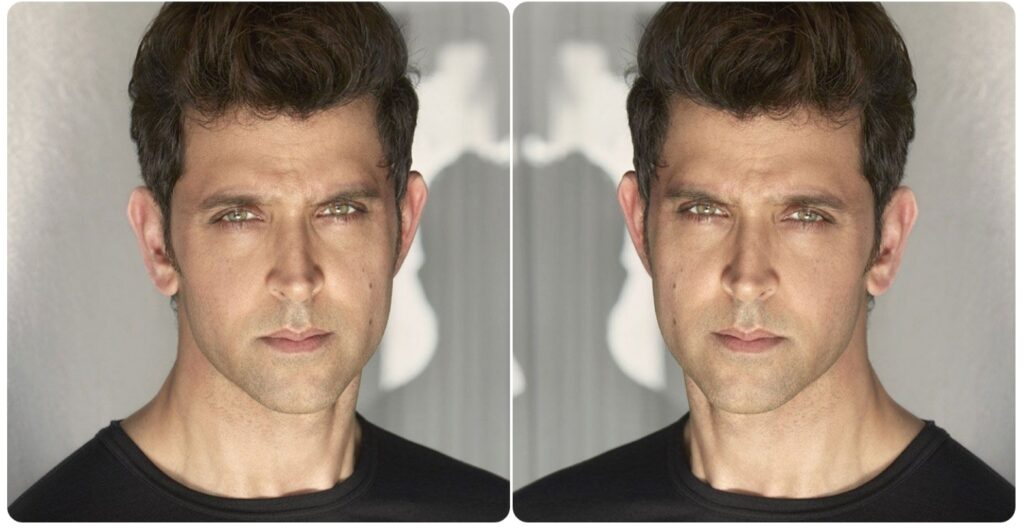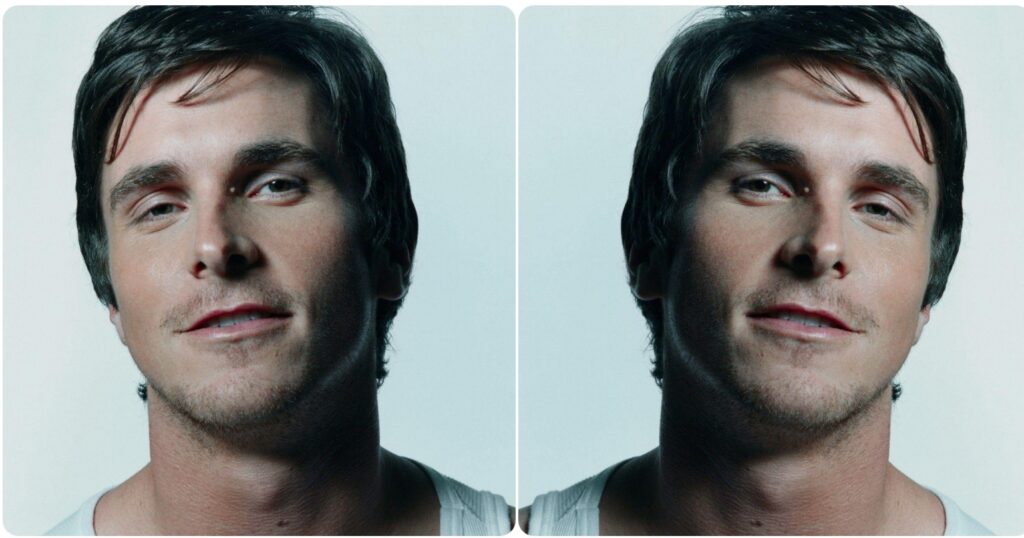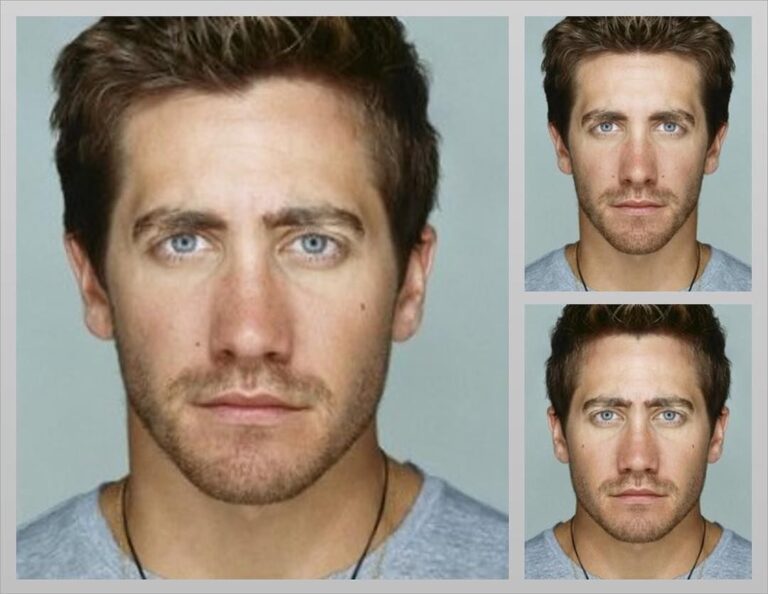No, when you look at yourself in a mirror, you see a horizontally flipped version of your image. However, other people see you as you truly are because a mirror reverses the image horizontally, giving you a different perspective from what others see when they look at you.
Let’s explore more together.
The Physiology of Vision
1. Your Eye’s Job:
- Your eye has a clear front part called the cornea that lets in light.
- The colored part of your eye, the iris, controls how much light gets in through the black spot in the center, the pupil.
- A lens inside your eye helps focus light onto the back part called the retina.
2. The Retina and Photoreceptors:
- The retina is like the movie screen at the back of your eye.
- In the retina, you have special cells called rods and cones.
- Rods work in dim light and help you see at night.
- Cones are for colors and fine details.
3. Turning Light into Signals:
- When light hits the rods and cones, they turn it into electrical signals.
- These signals are sent to the brain through the optic nerve.
4. The Brain’s Role:
- Your brain gets these signals and makes sense of them.
- It has a special part for seeing things called the visual cortex.
5. Making Sense of Colors and Shapes:
- Your brain figures out colors and shapes from the signals it gets.
- It also tells you about the depth and motion of things you see.
How Your Brain Recognizes Faces: A Unique Process

The question of whether our brains handle recognizing faces differently than other visual information is indeed intriguing. The answer is a resounding yes. Using advanced brain-scanning techniques like fMRIs, scientists have identified specific areas in the brain that become active when we see faces, setting them apart from other things we see.
Further, these areas are mainly in the temporal and occipital lobes, along with parts of the limbic system that add emotions to familiar faces.
What’s even more fascinating is that when it comes to recognizing our own faces, the left side of our brain does most of the work. This has been observed in studies where the two halves of the brain can’t communicate, but the left side still recognizes the person’s own face.
One specific brain area that’s gained a lot of attention is the fusiform face area, found in the temporal lobe. It seems to be dedicated to processing faces, whether they belong to others or to us.
Lastly, It is incredibly attuned to how we perceive ourselves. They have distinct pathways to remember how we used to look, how we look now, and how we see ourselves in the mirror or in photos. This shows just how intricate our brain’s ability to process faces is.
The Perceptions of Self in Mirrors and Photographs
The debate over whether the mirror or the camera reflects our true self is a fascinating exploration of the differences in how we perceive our appearance. This distinction is influenced by various factors, including lighting, angles, lenses, and the unpredictable nature of the camera flash.
Lighting: The mirror provides a consistent image, as our brains naturally adjust for lighting variations, presenting us with a reflection aligned with our daily self-perception. In contrast, the camera objectively captures all lighting nuances, shadows, and tones, making lighting quality a key factor in the difference between the mirror and the photograph.
Angles: Further, it can distort facial features, especially in the transition from a 3D reality to a 2D photograph. The camera meticulously captures every detail, even those that go unnoticed in mirrors or real life, potentially leading to unflattering results.
Lenses: Different camera lenses offer unique perspectives and optical effects, altering how the subject appears. Wide-angle lenses, for example, are excellent for landscapes but can introduce subtle distortions, while ultra-wide lenses can magnify close objects and make distant ones seem small.
Camera Flash: It can significantly impact one’s appearance, enhancing lighting but potentially producing unflattering results. Some even claim that it can make a person appear older and shinier, adding complexity to the mirror vs. camera debate.
Why the Mirror Trumps the Camera in Accuracy

A mirror’s accuracy outshines that of a camera for several compelling reasons. It delivers an image that remains closer to your genuine appearance, largely unaffected by external factors. Here, we delve deeper into this distinction:
Resemblance to Your True Self: The mirror excels in authenticity by presenting an image remarkably akin to your natural looks. While ambient lighting may exert minor effects, they are dwarfed in comparison to the camera’s propensity for altering your image through manipulative angles, lighting, and filters.
A 3D Visual Experience: Another pivotal edge of the mirror’s accuracy is its ability to conjure a three-dimensional portrayal of yourself. In stark contrast, the camera merely offers a two-dimensional rendition. It invites you to assume various poses and explore your expressions, offering a dynamic self-reflection, while the camera remains limited to capturing a single frozen moment.
Reflecting Your Every Move: Mirrors in their precision, faithfully your every motion. This level of interaction is beyond the reach of a camera. In front of it, you can observe yourself laughing, speaking, smiling, or even shedding a tear, capturing the full spectrum of your animated existence.
Unleashing Expressions: The mirror doesn’t just mirror; it showcases your expressiveness in ways photographs cannot match. When posing for a camera, there’s often a rehearsed quality to your smile and facial expressions. On the other hand, it unveil the spontaneity and nuance of your ever-changing countenance.
FAQs
Is Your Reflection on the Mirror What Others See?
No, Your reflection in the mirror is not what others see. The mirror image is reversed, and it may not accurately represent how you appear to others in real life.
How to See Yourself as Others See You?
To see yourself as others see you, you can use a True Mirror. This type of mirror displays a non-reversed image, giving you a more accurate representation of how you look to others.
Do People See Your Face Inverted?
No, When people look at you, they do not see your face as inverted like in the mirror. Our faces are asymmetrical, and the mirror’s reflection is reversed.
How do You See Yourself in the Mirror?
When you look in the mirror, you see a reversed image. If you move your left hand, your mirror image moves its right hand. This is due to the mirror’s reflective properties.
What Does a True Mirror Do?
A True Mirror displays a non-reversed image, allowing you to see yourself as others see you. It optically restores your true image, giving a more accurate reflection.
How Do People See My Face?
People see your face as a non-reversed image in real life, which is different from the reversed image you see in the mirror.
How Can I See Myself as Others See Me?
To see yourself as others see you, you can use a true mirror or applications that reverse your facial selfie. For example, the TikTok inverted filter can provide a view of your face as others see it.
What is a TikTok Inverted Filter?
A TikTok inverted filter is a type of filter that reverses your facial selfie, showing your face as others see it. It may appear slightly different but offers an inverted perspective.
Does the Mirror Show the Real You?
No, the mirror does not show the real you. It reflects a reversed image horizontally, but the same from top to bottom. Your image in the mirror is flipped left to right, not top to bottom.
Which is the Real Me: Camera or Mirror?
Mirrors provide a more accurate image of yourself compared to the camera. Mirrors reflect your image without alteration, whereas the camera’s portrayal can change due to factors like lighting, angles, and applications used.
Why Do I Look Better in the Mirror?
You appear better in the mirror because you’re accustomed to the daily reflection. The familiarity with your mirror image, from your expressions to movements, makes it more appealing to you. When you see a photo of yourself, the reversed image can appear different and unfamiliar, leading to the perception of looking better in the mirror.
Final Words
To sum up, people do not see you inverted. When you look in a mirror, you see a reversed version of yourself because of how mirrors work.
However, others see you as you truly are, without this horizontal flip. So, your self-image in the mirror may seem different but how others see you is not inverted.

